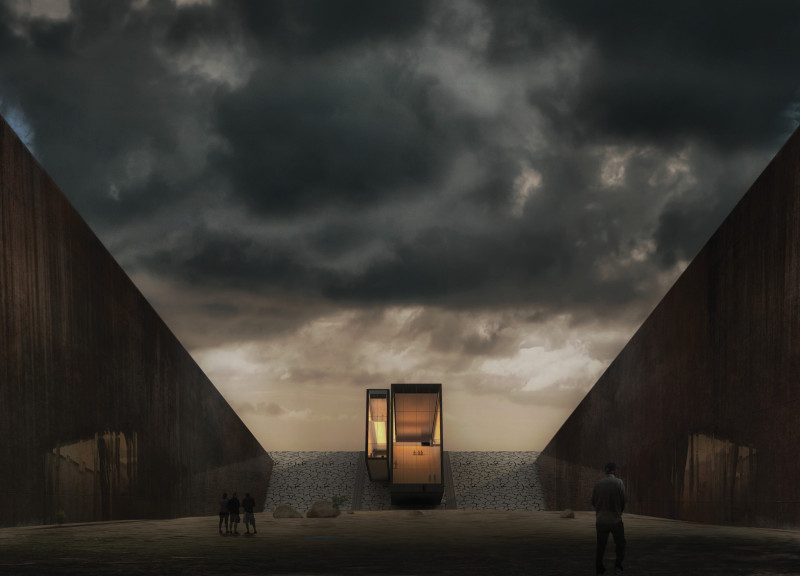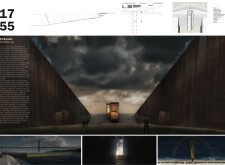5 key facts about this project
### Overview
The Earthquake Site Memorial is located in Lisbon, commemorating the catastrophic earthquake of 1755 that significantly impacted the city’s history and identity. The memorial aims to serve as a space for reflection on humanity's vulnerability to natural disasters while highlighting the historical and philosophical shifts that arose from this tragedy. The design reinforces a narrative of remembrance and contemplation, allowing visitors to engage with the memories of those lost and the broader implications of nature’s power.
### Architectural Layout and Visitor Experience
Positioned along the shoreline, the memorial's layout aligns with historical patterns associated with the earthquake event. The main feature comprises two rusted Corten steel walls that face each other, creating an intimate entrance bounded by the sea. Upon approaching, visitors progress through a narrowing passage, evoking themes of confinement and protection, before arriving at a central area paved with smooth, angular stones that reflect the geological unpredictability of seismic activity.
### Materiality and Symbolism
The material choices in the memorial are essential in conveying its themes. Weathered Corten steel walls symbolize the passage of time and the enduring memory of the disaster, while large glass panels introduce transparency, fostering a dialogue between the interior space and the environment. The use of natural stone in the plaza represents resilience amidst calamity. A central opening acts as a metaphorical doorway, signifying transitions between life and death, while strategically placed lighting accentuates architectural features, creating shadows that allude to life's unpredictability and the omnipresent forces of nature.



















































